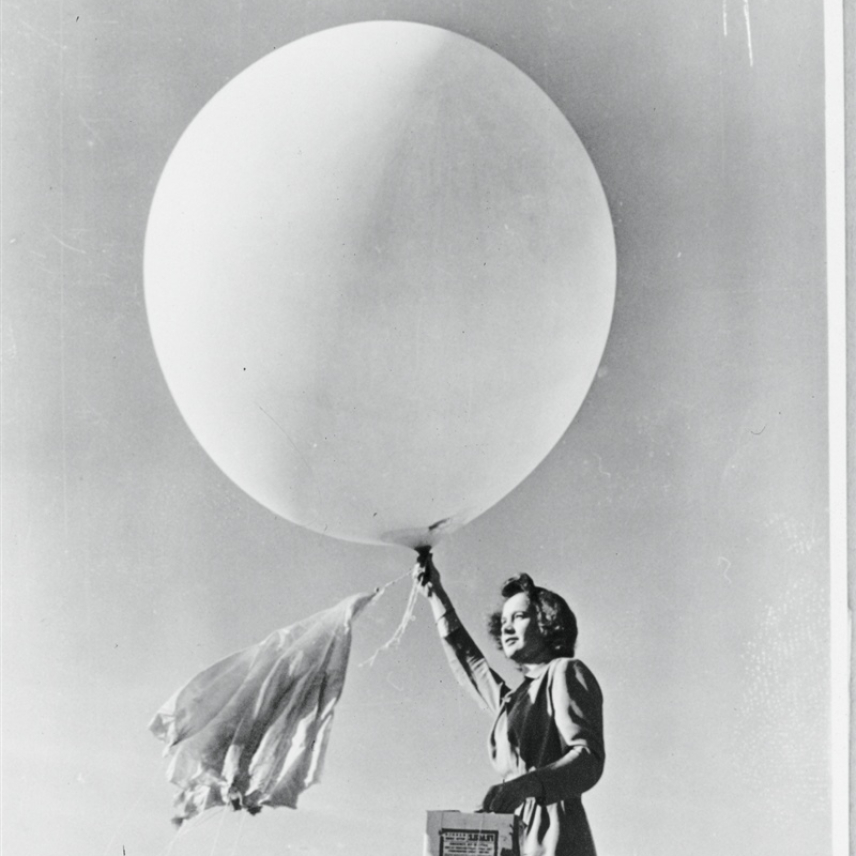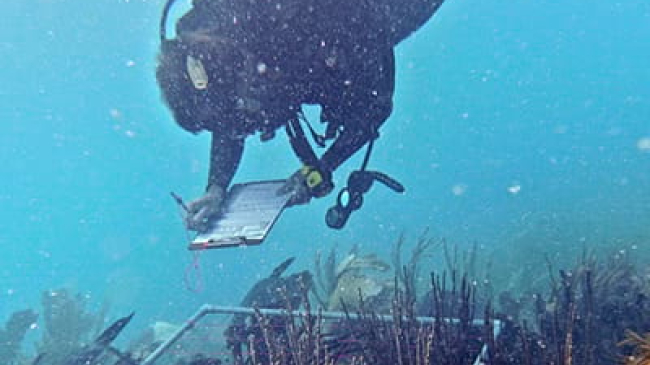
Editor’s Note: This oral history was conducted by Molly Graham in 2020 as a part of the NOAA 50th Anniversary Oral History Project.
When Dr. Pam Heinselman first joined NOAA as a summer intern with the National Severe Storms Laboratory in Norman, Oklahoma, she was interested in analyzing weather radar data. Instead, she found herself out in the field - wearing oversized yellow rain gear - collecting data during lightning storms. While severe storm work wasn’t exactly “on her radar” then, she returned to the NSSL through the University of Oklahoma cooperative instituteoffsite link offsite link in the mid-90s, around the time NOAA began installing a nationwide weather Doppler network. There, she got the best of both worlds, helping to develop algorithms from radar data that helped in storm forecasts.
Today, Dr. Heinselman - who claims she was afraid of thunderstorms as a child - now leads a team of scientists using research and cutting-edge technologies to help forecasters improve severe storm warning times for the public. She manages the Warn-on Forecast research program, which is working to use computer models to predict tornadoes, severe thunderstorms, and flash floods 30-60 minutes before they form.
Hear a snippet of the interview recorded January 12, 2020 in Boston, MA:
Transcript:
On becoming interested in weather in middle school:
PH: We had classes on geology, but also on weather. It was really from that point on that I was considering either studying geology or studying weather. I think if it weren't for that class, I don’t know if that would have been sparked – those two interests in the natural world. But I think the weather part, in the longer term, really stuck with me because it changes every day, whereas geology, you’re always looking at the past. Of course, there’s a lot of value in history, but at the same time, I was very intrigued by being able to study something that’s ever-evolving and also was related to a lot of the time I spent outside. So I talked about spending time at the beach and hiking. Even as a kid, I was a tomboy, so I spent a lot of time outside playing with my younger brother’s friends. A lot of that involved looking at the sky. I loved looking at cloud formations. Sometimes I would just sit outside and look up there and watch the clouds go by. One of the things that intrigued me living in Maryland where it’s pretty hilly in the part where I grew up is that I would see these dark clouds coming. And I would try to figure out by the feel of the air – how humid is it? – and the direction of the wind, the look of the sky, what is going to happen. Is it going to be really storming, and am I going to be seeing our trees blowing over? And waiting to see if they stand back up again, or is it something that isn’t going to be that significant. It was very difficult for me to figure that out because what I learned later is that the visibility of the sky was so limited that you couldn’t really see the structure of the clouds very well. I think that that component sparked my interest in weather and evolved after the eighth grade for sure.
MG: And didn’t you have your own barometer?
PH: I did. I built a barometer. That was for a science project. So then I got to mark every day – it was very simple. It was just a jar, and I had a straw. I was marking whether it went up or down, and relating that to what was actually happening with the weather. That was pretty cool, too. As I got older, what I realized, and this is related to development in NOAA with technology, is that at that time when I was growing up, weather radar was not something that you saw on the news. Right? There was no network of weather radars. I ended up going into that. I may be skipping ahead here, but I see such a contrast between what students can see and learn now by looking out the window and actually seeing images like weather radar images and other data that are now available, and what we had when I was growing up. These technologies – it started with me; it was just something as simple as a homemade barometer, but there are so many technologies that have evolved since then that really help someone better understand storms and what’s happening within them, above and beyond looking out the window.




